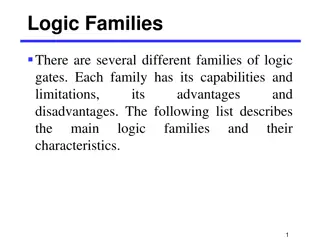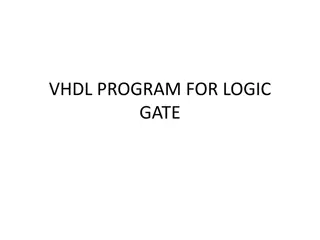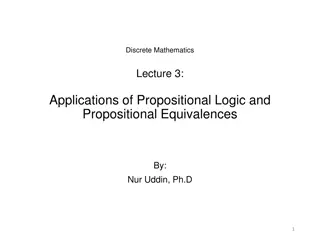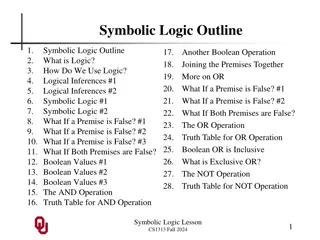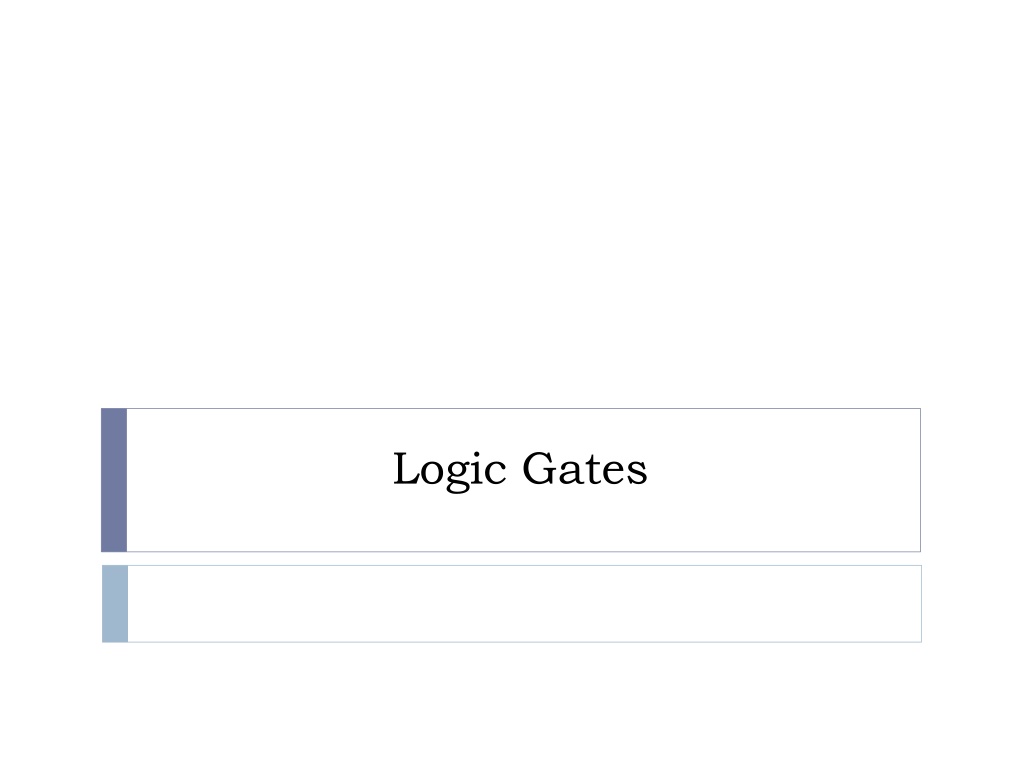
Understanding Logic Gates: Behavior & Circuits
Explore the world of logic gates, including their types such as NOT, AND, OR, XOR, NAND, and NOR. Learn how these gates operate, combine to form circuits, and analyze their behavior using Boolean expressions, truth tables, and logic diagrams.
Download Presentation

Please find below an Image/Link to download the presentation.
The content on the website is provided AS IS for your information and personal use only. It may not be sold, licensed, or shared on other websites without obtaining consent from the author. If you encounter any issues during the download, it is possible that the publisher has removed the file from their server.
You are allowed to download the files provided on this website for personal or commercial use, subject to the condition that they are used lawfully. All files are the property of their respective owners.
The content on the website is provided AS IS for your information and personal use only. It may not be sold, licensed, or shared on other websites without obtaining consent from the author.
E N D
Presentation Transcript
Objectives Identify the basic gates and describe the behavior of each Combine basic gates into circuits Describe the behavior of a gate using Boolean expressions, truth tables, and logic diagrams
Definition A gate is a device that performs a basic operation on electrical signals Gates are combined into circuits to perform more complicated tasks describing the behavior of gates and circuits by Boolean expressions logic diagrams truth tables
Gates six types of gates NOT AND OR XOR NAND NOR
NOT Gate A NOT gate accepts one input value and produces one output value By definition, if the input value for a NOT gate is 0, the output value is 1, and if the input value is 1, the output is 0 A NOT gate is sometimes referred to as an inverter because it inverts the input value
AND Gate An AND gate accepts two input signals If the two input values for an AND gate are both 1, the output is 1; otherwise, the output is 0
OR Gate If the two input values are both 0, the output value is 0; otherwise, the output is 1
XOR Gate XOR, or exclusive OR, gate An XOR gate produces 0 if its two inputs are the same, and a 1 otherwise Note the difference between the XOR gate and the OR gate; they differ only in one input situation When both input signals are 1, the OR gate produces a 1 and the XOR produces a 0 4 8
NAND and NOR Gates The NAND and NOR gates are essentially the opposite of the AND and OR gates, respectively
Review of Gate Processing A NOT gate inverts its single input value An AND gate produces 1 if both input values are 1 An OR gate produces 1 if one or the other or both input values are 1 An XOR gate produces 1 if one or the other (but not both) input values are 1 A NAND gate produces the opposite results of an AND gate A NOR gate produces the opposite results of an OR gate
Gates with More Inputs Gates can be designed to accept three or more input values A three-input AND gate, for example, produces an output of 1 only if all input values are 1
Circuits Two general categories In a combinational circuit, the input values explicitly determine the output In a sequential circuit, the output is a function of the input values as well as the existing state of the circuit As with gates, we can describe the operations of entire circuits using three notations Boolean expressions logic diagrams truth tables
Combinational Circuits Gates are combined into circuits by using the output of one gate as the input for another
Combinational Circuits Because there are three inputs to this circuit, eight rows are required to describe all possible input combinations This same circuit using Boolean algebra: (AB + AC) 4 14
Now lets go the other way; lets take a Boolean expression and draw Consider the following Boolean expression: A(B + C) Now compare the final result column in this truth table to the truth table for the previous example They are identical
Adders At the digital logic level, addition is performed in binary Addition operations are carried out by special circuits called, appropriately, adders The result of adding two binary digits could produce a carry value Recall that 1 + 1 = 10 in base two A circuit that computes the sum of two bits and produces the correct carry bit is called a half adder
Adders Circuit diagram representing a half adder Two Boolean expressions: sum = A B carry = AB
Integrated Circuits Integrated circuits (IC) are classified by the number of gates contained in them
CPU Chips The most important integrated circuit in any computer is the Central Processing Unit, or CPU Each CPU chip has a large number of pins through which essentially all communication in a computer system occurs



